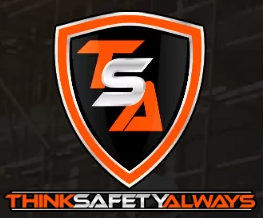A qualified rigger is a rigger who meets the criteria for a qualified person. Employers must determine whether a person is qualified to perform specific rigging tasks. Each qualified rigger may have different credentials or experience.

About The Course:
Employers must use qualified riggers during hoisting activities for assembly and disassembly work (1926.1404(r)(1). Additionally, qualified riggers are required whenever workers are within the fall zone and hooking, unhooking, guiding a load, or doing the initial connection of a load to a component or structure (1926.1425(c).
A qualified rigger is a rigger who meets the criteria for a qualified person. Employers must determine whether a person is qualified to perform specific rigging tasks. Each qualified rigger may have different credentials or experience.
The requirements for Riggers are less concrete. In some circumstances, OSHA requires employers always to use qualified riggers. These include any hoisting activities relating to the assembly and disassembly of the rig.
Qualified riggers must also be used whenever there will be other workers inside the fall zone (the area directly under a load or the expanded area a load could fall into).
Qualified riggers must also be used whenever workers will be guiding a load, hooking and unhooking a load, or connecting a load to a structure while it is still attached to the rig.
According to OSHA, it is the employer’s responsibility to determine whether a person is qualified to be a rigger. Having a degree, certificate, or professional accreditation as a rigger is one way to qualify as a rigger.
Formal qualification or certification in rigging is not required, as long as the employer can show the rigger has the knowledge, experience, and training in rigging and can demonstrate the ability to solve rigging problems.
Employers are not required to have riggers independently tested or assessed, but certification can certainly assist in documenting that an individual is a qualified rigger.
How are signalpersons and/or riggers prepared
A quality training program will provide a good combination of technical knowledge and hands-on examples to show an application of the principles and techniques taught.
Most quality training offers ample opportunity for hands-on instruction using pre-made scenarios that require the candidates to apply the technical knowledge they learned in the classroom.
During training, the hands-on scenarios should be assessed, and proper feedback is given to the candidates to ensure a complete understanding of the concepts and techniques learned.
The training usually includes a pre-certification written exam so the candidate and the trainer can assess comprehension. In this way, the training is more than just “teaching to the test.”
About Us
Work Safety is a set of measures to be implemented in the workplace as quality assurance and safety of employees. The main objective is to maintain the physical and psychological integrity of staff and combat risks and occupational accidents.
It encompasses a set of measures aimed at reducing accidents and occupational diseases, thus protecting the employee’s physical integrity, skills, and the institution as a whole.
Investing in job security means that your company is in compliance with the standards established by OSHA for the safety of employees, while staying attentive to the quality of the relationship within the company. Think Safety Always is dedicated to providing the most comprehensive training available nationwide.
Our Mission & Core Values
© 2025 coursetakers.com All Rights Reserved. Terms and Conditions of use | Privacy Policy